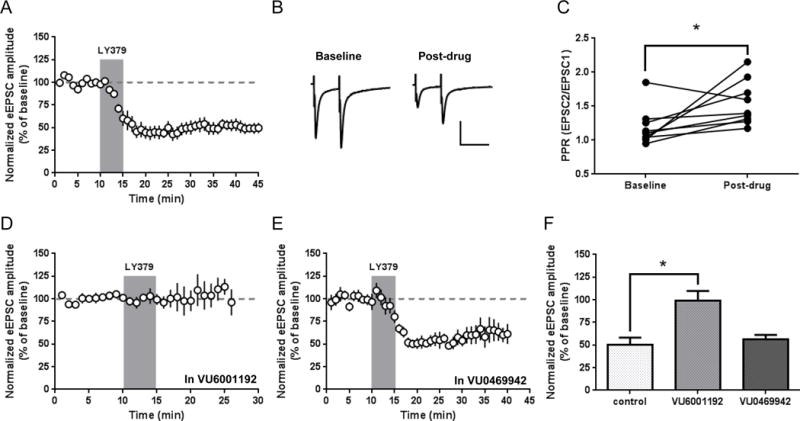Figure 1.

Activation of presynaptic mGlu2 induces LTD of electrically-evoked excitatory transmission. (a) Bath application of LY379268 (100 nM, 5 minutes) produces a long-lasting depression of EPSC amplitudes. (b) Sample traces from paired-pulse recordings (50 ms inter-pulse interval). Traces were averaged over 5 minutes of baseline recording prior to drug application and over the 5 minutes immediately termination of drug application. Scale bars: 200 pA, 50 ms. (c) Paired-pulse ratios (PPR, calculated as EPSC2/EPSC1 amplitude) for individual experiments before and after LY379268 application (p = 0.037, paired t test). (d) Effect of the mGlu2-selective NAM VU6001192 (10 μM, present throughout recording) on LY379268 inhibition of EPSCs. (e) Effect of the mGlu3-selective NAM VU0469942 (10 μM, present throughout recording) on LY379268 inhibition of EPSCs. (f) Summary of LY379268 effect from 6–10 minutes after onset of LY379268 application (mean ± SEM). VU6001192 significant blocked the effect of LY379268 (control vs. VU6001192, p < 0.05, Dunnett’s test). EPSC amplitude time course data are normalized to the average baseline EPSC amplitude and shown as mean ± SEM.
